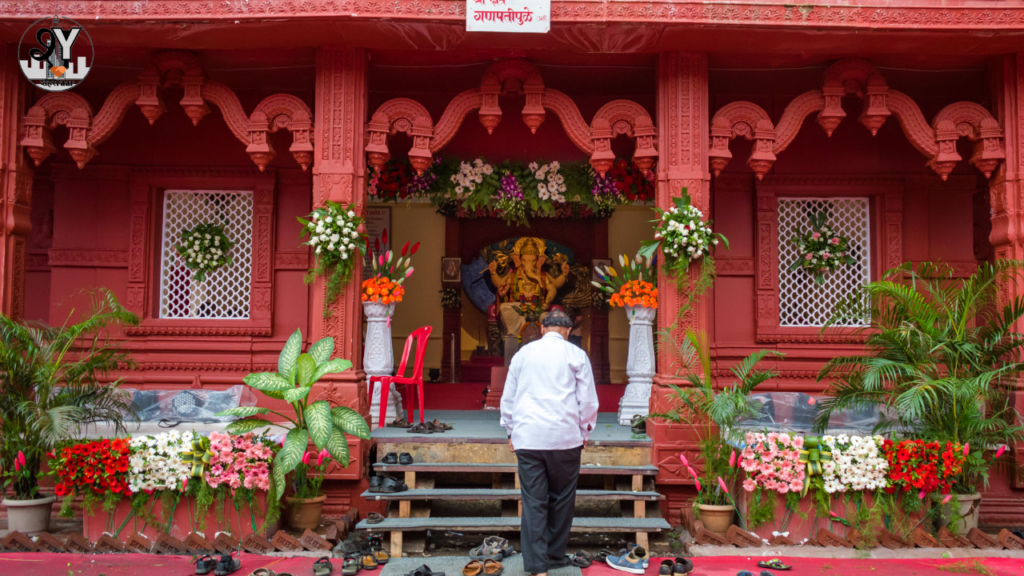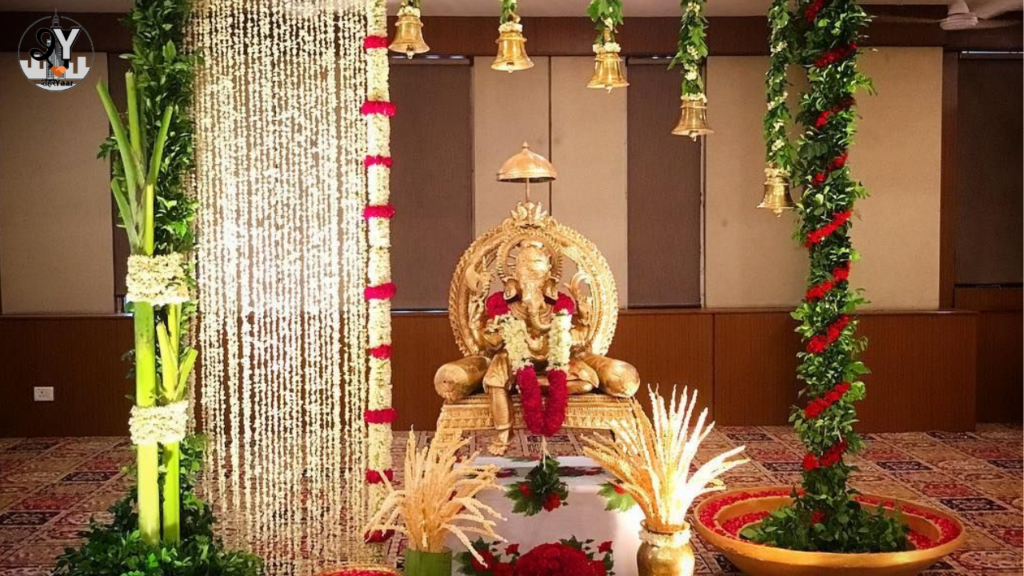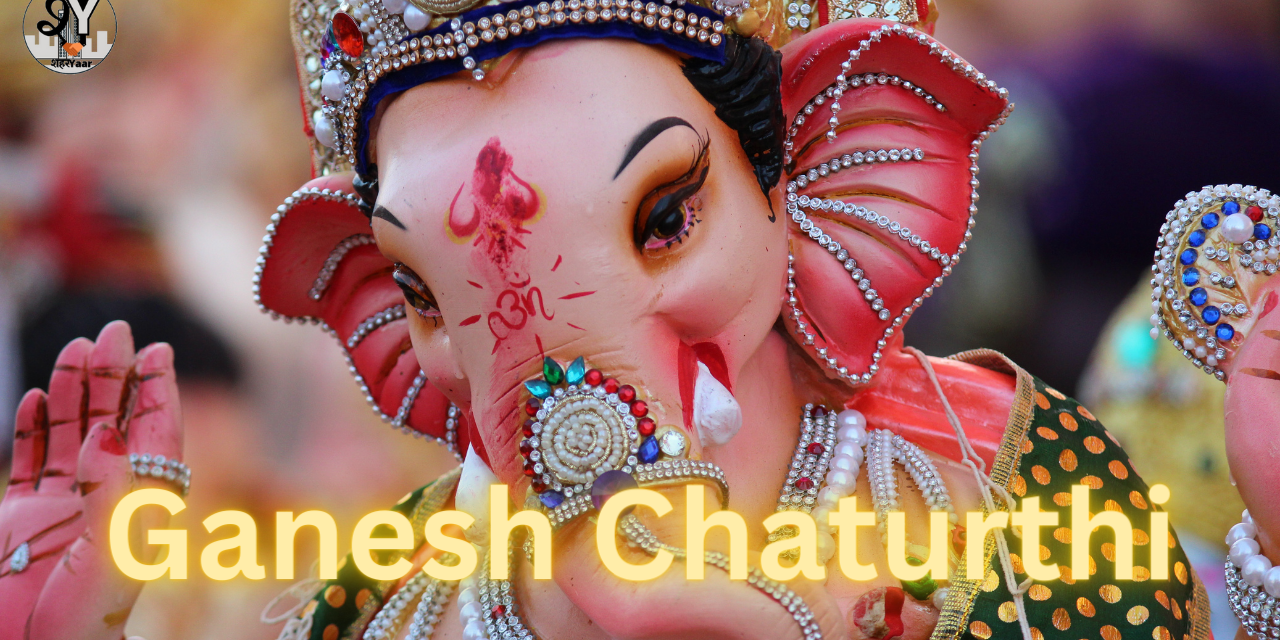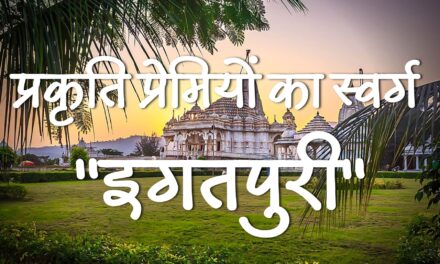Ganesh Chaturthi, also known as Vinayaka Chaturthi, is one of the most revered and widely celebrated festivals in Maharashtra, India. This auspicious occasion marks the birth of Lord Ganesha, the elephant-headed deity, who symbolizes wisdom, prosperity, and the removal of obstacles. The festival, which usually falls between August and September, is a vibrant and exuberant affair that brings together communities, families, and individuals to celebrate the beloved “Vighnaharta.”
India, a land of diverse cultures and traditions, is home to a plethora of festivals that showcase its rich heritage and spiritual significance. One such vibrant and widely celebrated festival is Ganesh Chaturthi, a festival dedicated to Lord Ganesha, the elephant-headed god of wisdom, prosperity, and good fortune. Ganesh Chaturthi, also known as Vinayaka Chaturthi, marks the birth of Lord Ganesha and is observed with great enthusiasm and devotion across the country. Let’s delve into the origins, rituals, significance, and eco-friendly initiatives associated with this remarkable festival that has captured the hearts of millions.

Origins and Legends:
The origins of Ganesh Chaturthi can be traced back to the Maratha ruler, Chhatrapati Shivaji Maharaj. However, it gained immense popularity during the 19th century, thanks to the efforts of freedom fighter Lokmanya Tilak, who used it as a platform to foster unity and patriotism during British rule. Since then, the festival has not only retained its religious significance but also evolved into a socio-cultural event that reflects the spirit of Maharashtra. Lord Ganesha, the beloved son of Lord Shiva and Goddess Parvati, is revered as the remover of obstacles and the deity of intellect and wisdom. The story of his birth varies across different texts, but a popular legend recounts that Goddess Parvati created Ganesha from sandalwood paste and brought him to life to guard her while she bathed. When Lord Shiva returned home, he was denied entry by Ganesha, who was following his mother’s orders. A misunderstanding led to a fierce battle between Lord Shiva’s followers and Ganesha. Upon realizing the truth, Lord Shiva restored Ganesha’s life and granted him a special place among the gods, declaring that he should be worshipped before all other deities. This tale symbolizes the importance of humility, devotion, and the triumph of wisdom over impulsive actions.

Preparation and Pandal Decoration:
Months before the festival, the preparations begin. Artisans across the state create intricate clay idols of Lord Ganesha, ranging from small household ones to massive ones for community pandals (temporary structures). These idols often depict Ganesha in various poses and themes, capturing the essence of different stories from Hindu mythology.
The pandals are a sight to behold, decorated with elaborate themes, colourful lights, and creative artwork. Themes can range from historical events to current social issues, showcasing the versatility of the festival beyond its religious roots.
The Grand Celebrations:
Ganesh Chaturthi is celebrated with immense fervour and grandeur, spanning over several days. The preparations for the festival begin well in advance, as artisans and devotees create elaborate clay idols of Lord Ganesha in various sizes. The idols are often adorned with vibrant clothing, jewellery, and intricate decorations. The festival usually falls in the Hindu month of Bhadrapada (August-September) and lasts for ten days, with the grandest celebrations occurring on the final day.

Rituals and Traditions:
The festival is characterized by a series of rituals and ceremonies that showcase the devotion and cultural diversity of India. The idol of Lord Ganesha is ceremoniously installed in homes and public places, accompanied by the chanting of Vedic hymns and prayers. Devotees offer modak (a sweet dumpling) and other favourite dishes of Lord Ganesha as a symbol of their devotion. Traditional music, dance, and cultural performances add to the festive atmosphere.
The immersion of the Ganesha idol, known as “Visarjan,” is one of the most iconic aspects of Ganesh Chaturthi. On the last day of the festival, processions are held as devotees carry the idol to a water body, such as a river or the sea, for immersion. The procession is a colourful affair with singing, dancing, and fervent devotion on display. This act symbolizes the cyclical nature of life, as Lord Ganesha is believed to return to Mount Kailash, his heavenly abode while blessing his devotees with his presence until the next year.

Spiritual Significance:
Ganesh Chaturthi holds profound spiritual significance that transcends religious boundaries. Lord Ganesha’s distinct appearance with an elephant head and a human body signifies the synthesis of human and divine qualities. His large ears symbolize the importance of listening, his small eyes represent concentration, and his broken tusk signifies sacrifice and humility. The festival teaches us to embrace these virtues and seek wisdom, understanding, and compassion in our lives. Additionally, the tradition of Ganesh Chaturthi reinforces the values of family, community, and the preservation of cultural heritage.
Eco-Friendly Initiatives:
In recent years, there has been a growing awareness about the environmental impact of traditional Ganesha idols made from plaster of Paris (PoP) and harmful chemical dyes. These materials can cause water pollution and harm aquatic life when the idols are immersed in water bodies. To address this issue, there has been a commendable shift towards eco-friendly celebrations. Many artisans now create idols using natural clay and water-soluble colours that do not harm the environment. These eco-friendly idols dissolve in water, leaving no traces of pollution behind. This initiative showcases the harmonious blend of tradition and responsibility towards the planet. While Ganesh Chaturthi retains its core traditions, it also adapts to contemporary values. Many households now opt for eco-friendly idols made from natural materials to promote environmental conservation. Additionally, digital platforms are used to organize virtual aartis and connect with distant family members and friends.

Visarjan – Immersion Ritual:
The festival concludes with the ‘visarjan’ ritual, where the Ganesha idols are immersed in water bodies, symbolizing the deity’s return to his celestial abode. This ritual is a spectacle of energy and devotion as processions fill the streets with dancing, drumming, and chanting. The immersion also carries an important environmental message, encouraging eco-friendly practices to minimize the impact on water bodies.
Conclusion:
Ganesh Chaturthi is more than just a festival; it is a celebration of wisdom, unity, and spirituality. The festival brings people together, fostering a sense of community and devotion that transcends cultural and religious differences. From the intricately crafted idols to the lively processions, Ganesh Chaturthi is a spectacle that captures the essence of India’s cultural tapestry.
As we revel in the festivities of Ganesh Chaturthi, let us also remember the teachings of Lord Ganesha – to approach life with an open heart, embrace challenges with wisdom and humility, and strive for a harmonious existence with both the divine and the natural world. In this celebration of joy and spirituality, let us also embrace the importance of environmental consciousness by opting for eco-friendly practices. As the vibrant chants of “Ganpati Bappa Morya!” fill the air, may they remind us of the ever-present blessings and the auspiciousness that Lord Ganesha bestows upon us.





